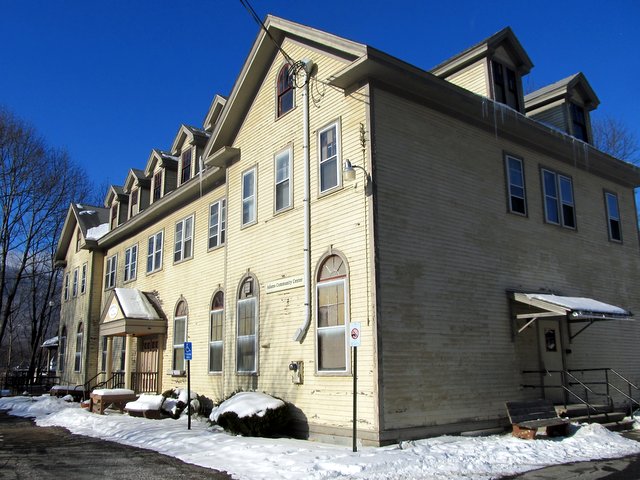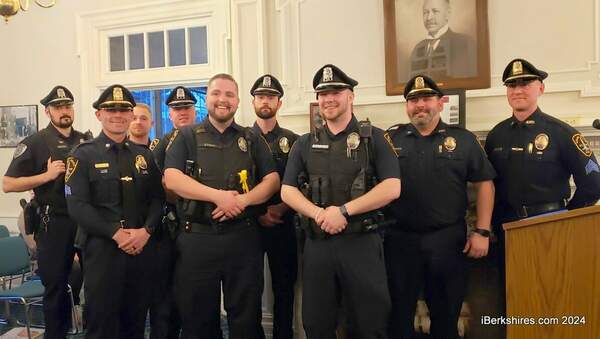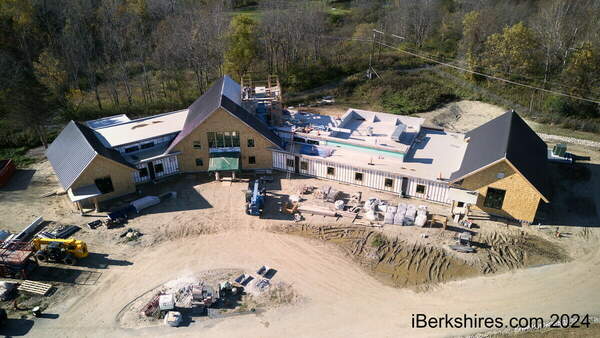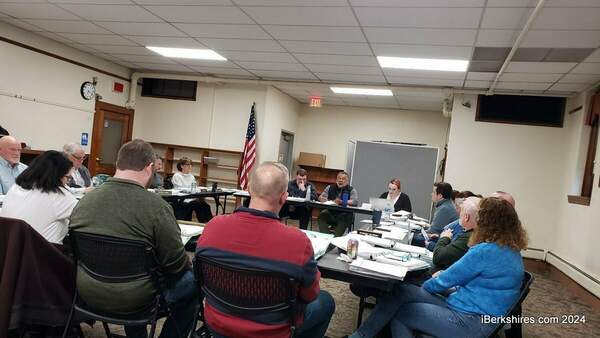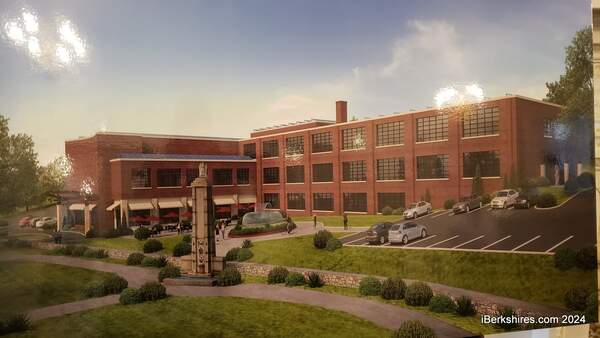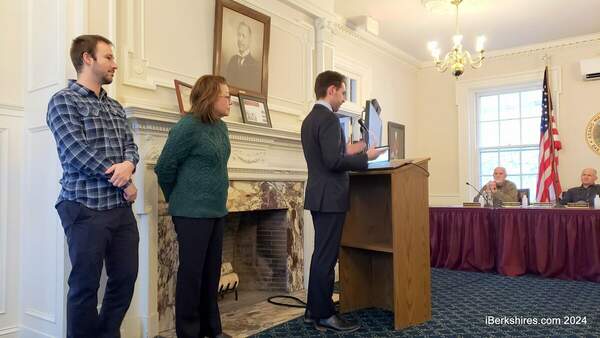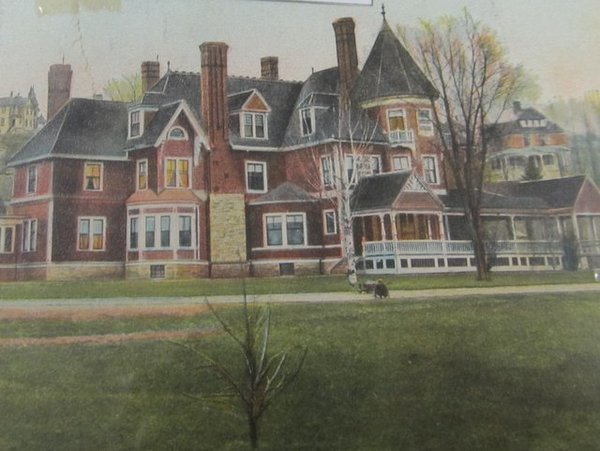
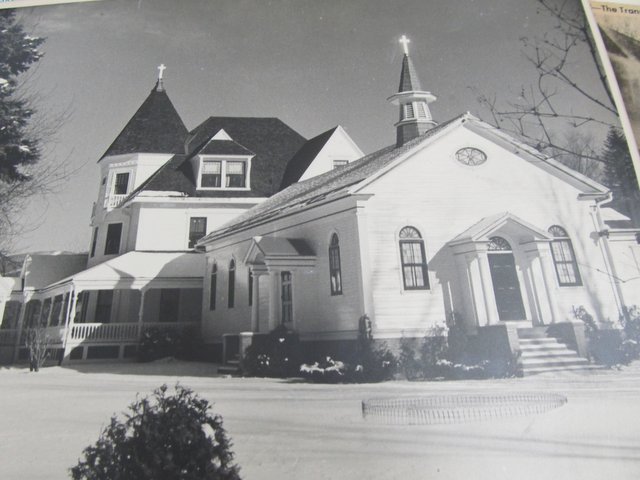
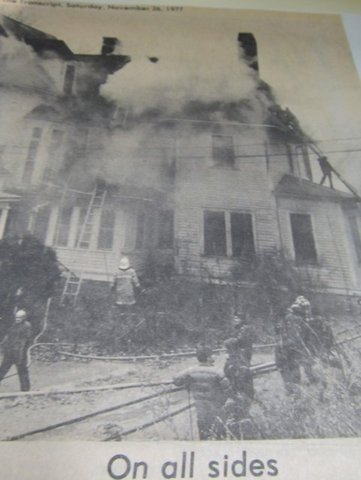
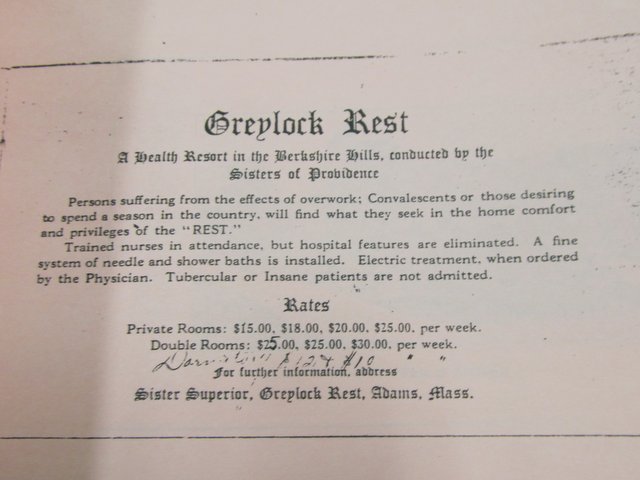
Storied Adams' Property Set For New Chapter
|
|
|
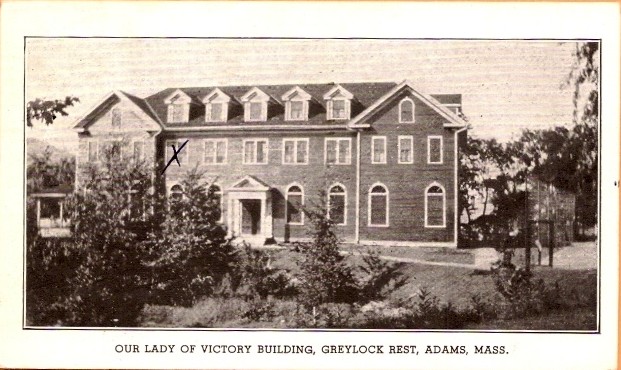 |
The Community Center, built in the 1920s, may soon be vacant and the town will have to decide what to do with it. Left, an undated photo of the dormitory. |
ADAMS, Mass. — Word traveled fast in the morning of Sept. 28, 1900, that James Renfrew had died at his East Street home.
One hundred and thirteen years later, what's left of the estate of one of the town's most famous citizens is set to enter yet another chapter in its history.
Renfrew, an immigrant from Scotland, came to Adams in 1849 at the age of 9 and, in 1857, started what would become one of the town's largest employers — Renfrew Manufacturing Co.
Renfrew, then 60, was preparing for a vacation to Maine when he had a heart attack after walking home from downtown.
Children were let out of school and mill workers flooded the streets to mourn his death.
It was years earlier, in 1882, when Renfrew had purchased and then built one of the town's most extravagant mansions on the estate he called "Bonnie Brae." He later added a cottage for his daughter.
The land has switched owners only a few times since his death and the property's gone from a mansion to a nunnery to a boarding school to a youth center. The last structure on the property was built decades after Renfrew's death.
Last year, voters decided it was time to close East Street Community Center — one of two buildings left on the estate. The building has fallen into disrepair and needs massive amount of work to continued to be used by its most recent occupants.
Council on Aging has already moved to the Adams Visitors Center and the Adams-Cheshire Youth Center Inc. is looking to rent the Memorial Middle School.
The town has not settled on what will happen to the building or when, but it isn't one they want to own anymore.
Just two years after Renfrew's death, his son, L. Brown Renfrew, sold Bonnie Brae to the Roman Catholic Diocese of Springfield, with help from the Rev. James Boyle of Pittsfield, to be occupied by the Sisters of Providence. The cottage was purchased shortly afterward. In 1903, the bishop led the first Mass there and left the nuns $50 to help get the mansion ready for opening. That money later went to add a cross to the top of the mansion.
The land was used for 63 years as Greylock Rest Sanitorium of the Sisters of Providence, a Catholic retreat for those who wanted a restful and religious atmosphere. Early pamphlets advertise the resort's hydraulic and electrical departments as means to "cure diseases."
"It was like a hotel for nuns and priests," Historic Commissioner Eugene Michalenko said. "I don't think people went there when they were sick."
It became well known and had such a demand that the diocese had to expand. On Oct. 28, 1924, the Sisters celebrated the opening of the attached Loreto Chapel and of the Our Lady of Victory dormitory, which most sources say is now the Community Center though Michalenko believes that building was added in the 1940s. The cottage was renovated in 1936.
"You could walk through all of them at once. The mansion was quite spectacular," Michalenko said.
Large galas and retreats brought some of the top religious leaders to the town.
In 1950, 772 guests had stayed on the property but with the emergence of more attractive resorts, the numbers had diminished to just 285 guests in 1965. By Jan. 1, 1967, the resort had closed and only four sisters remained on site until December 1968, when the property had again switched hands.What was left of the statues and relics from the church were removed in 1971 by St. Stanislaus Kostka Parish to create a grotto shrine at the cemetery on Route 116.
The church sold the property to Fred D. Byington, the director of a Connecticut boarding school, operating as Educational Services Foundation, for $35,000, well below the assessed value.
Byington had re-established in 1957 the school his father started in California — the Forum School — and it grew to become the Byton-Arnold School in Southbury, Conn.
Byton School was the merger of the Forum School for "underachievers," the Village School for elementary students and the Arnold School, a boys prep school. Byton School moved to Adams in 1969 to specialize with children with academic problems.
|
Industrialist James Renfrew built Bonnie Brae mansion in 1882. |
But the school did not arrive without skepticism. In Connecticut, the school had sold off more than $100,000 worth of property but there were claims it was being sued for back wages and yearbook printings.
Byington talked about students taking Caribbean cruises and trips to Europe. He had steel classrooms being built and planned a summer program for students before its September 1969 opening.
However, that July he canceled the summer session and had only a few students on a tutorial basis — two of which wound up in a police report that summer for running away at night.
His renovations were delayed and only 28 of the hoped-for 50 students had enrolled. But that September he opened the school with 13 teachers and 12 administrators and other staff.
Bad press followed the school in the 1970s. A student claimed in June 1970 she had been severely beaten by Byington but failed to appear in court so no charges were filed. That July, H.A. George Fuel Co. filed a suit for $4,000 worth of unpaid fuel and, on Oct. 13, 1970, the IRS briefly seized the property because federal withholding had not been paid for employees. The school eventually paid that.
In 1971, the school appeared to be back on track. Byton was granted a tax exemption and saw an increase in enrollment. But in March 1972, then town Treasurer Adele Wade filed to take the property because the prior taxes hadn't been paid.
Byington fought the taking on the stance that the school was exempt. Meanwhile, he sought state certification, which the school did not have. Two families had already sued saying they did not know the school was not state certified.
To get certification, Byington needed approval from the Adams-Cheshire Regional School District and a political battle waged between the educational entities. Eventually, the district did not approve of the school, which hindered Byington's ability to attract students. In 1973, he shut down.
For the next few years, Wade refused to take the final steps in foreclosing on the property to give the mortgage holder, Robert Pelletreau, first rights. Pelletreau had some potential buyers, including the Insight Meditation Society of Conway, which hoped to purchase it as a silent Buddhist retreat, but it was never able to raise enough funds to pay the back taxes.
Then Youth Center Director Harold Levesque lobbied to town to take possession for the center. While litigation between Pelletreau and the town tied up the issue for awhile, in 1977 it became clear that the town would have the property as soon as the decree was finalized.
On Nov. 25, 1977, an arson fire ravaged Renfrew's former home while ownership of the property was still being debated. In 1978, town meeting approved both the demolition of the three combined structures that were the mansion and leasing the dormitory to the Community Center for both the youth and senior citizens.
Tags: historical building,

